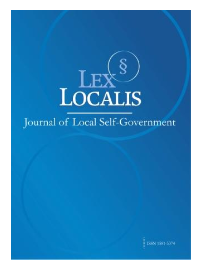NEUROFUSION-AD: A HYBRID 3D CNN-TRANSFORMER-BILSTM FRAMEWORK FOR FIVE-STAGE DEMENTIA PREDICTION AND DETECTION FROM STRUCTURAL MRI
DOI:
https://doi.org/10.52152/801720Keywords:
Alzheimer’s disease, Dementia classification, Deep learning, MRI neuroimag- ing, Hybrid architectures, Ordinal regressionAbstract
Background: Early and accurate detection of dementia progression remains a criti- cal challenge in neuroimaging, with most existing approaches limited to binary or ternary classification schemes that inadequately capture the gradual cognitive decline character- istic of Alzheimer’s disease (AD). Methods: We propose NeuroFusion-AD, a novel hy- brid deep learning framework that integrates three complementary processing streams: (1) 3D convolutional neural networks for whole-brain volumetric feature extraction, (2) 2D CNN coupled with bidirectional LSTM for slice-sequential temporal modeling, and (3) vision transformer with anatomical position encoding for multi-region fusion. The ar- chitecture incorporates ordinal classification constraints, self-supervised pretraining via masked volume modeling, and multi-task learning for joint stage prediction and cognitive score regression. We evaluated the framework on the ADNI dataset (2,847 subjects, 7,234 scans) with external validation on OASIS (755 subjects, 2,168 sessions) across five clin- ical stages: Cognitively Normal (CN), Significant Memory Concern (SMC), Early Mild Cognitive Impairment (EMCI), Late Mild Cognitive Impairment (LMCI), and Alzheimer’s Disease (AD). Results: NeuroFusion-AD achieved superior performance with 97.5% ac- curacy, 97.2% precision, 96.9% recall, and 97.0% F1-score, significantly outperforming state-of-the-art methods including LGG-NeXt (95.81% accuracy), AD-Diff (90.78% accu- racy), and traditional CNNs (72-78% accuracy). Stage-wise analysis demonstrated robust sensitivity (>94%) and specificity (>96%) across all dementia stages, with particularly strong performance in challenging SMC (95.8% sensitivity) and EMCI (94.5% sensitiv- ity) classifications. Statistical significance testing confirmed improvements over baselines (p < 0.05 for all comparisons), with large effect sizes (Cohen’s d: 0.42-2.87). Conclu- sions: The proposed NeuroFusion-AD framework addresses critical limitations in auto- mated dementia classification by providing accurate five-stage categorization with clinical interpretability through attention visualization and ordinal constraint enforcement. The multi-stream architecture’s balanced performance across all stages supports its potential for clinical deployment in early dementia detection and monitoring.
Downloads
Published
Issue
Section
License
Copyright (c) 2025 Lex localis - Journal of Local Self-Government

This work is licensed under a Creative Commons Attribution-NonCommercial-NoDerivatives 4.0 International License.








